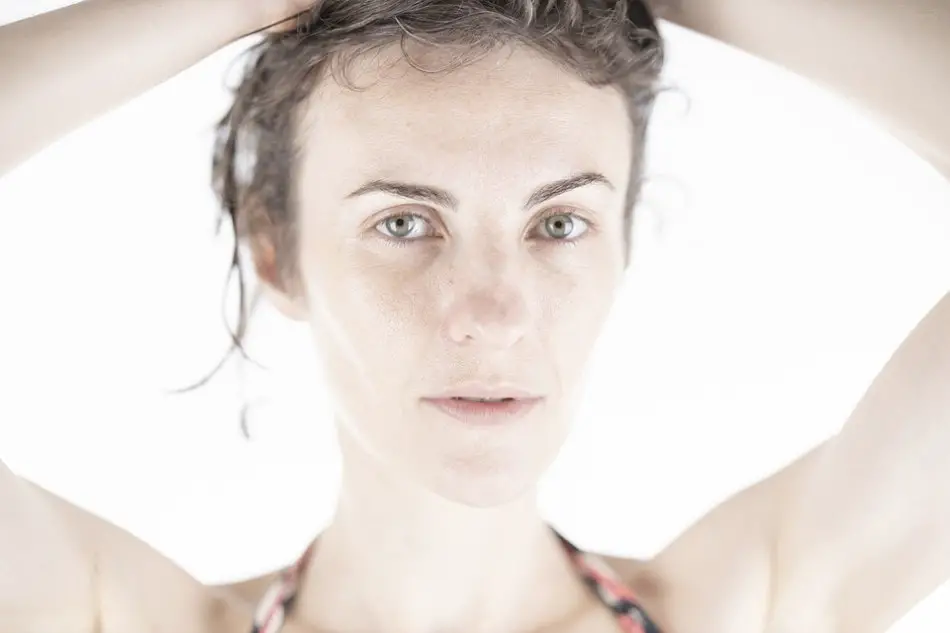Are you suffering from sun poisoning on the face? Read on to get more insights on treatment for blisters and sun poisoning swelling on the face. The post also explores what to do for sunburn effects after long exposure to the UV and UVB radiations from the sun.
* As an Amazon Associate I earn from qualifying purchases.
Sun poisoning is a serious type of sunburn. The sun allergy mainly occurs as a body’s reaction to the sun’s heating when you are too much exposed to the rays from the sun. Photodermatitis is a medical term for this effect of the sun on the skin. Low skin melanin content people are highly susceptible, and that’s why fair skins get more affected more than dark and black skin.
The face is one of the majorly affected parts of the body that gets affected by sun poisoning. Rashes, Blisters, and swelling on the face are among the symptoms of sun poisoning. When you read about what causes sun poisoning, you will realize that the sun produces harmful radiations such as UV and UVB that penetrate the skin and harm underneath cells and body organs.
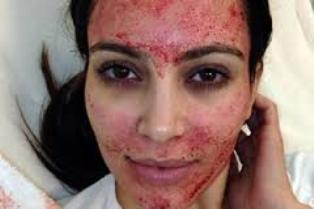
Sun Poisoning on Face
When you get sun poisoning on the face, there is the possibility of a rash, blisters, or swelling. It looks like it will definitely depend on how serious the symptoms are and the type of sun poisoning you are experiencing. Initially, your skin on the face will appear very red in color, followed by peeling off and eventually forming blisters.
Solar urticaria is a type of sun poisoning that will make your skin on the face feel itchy, ridden, and eventually swelling to form hives. It may appear like eczema due to the formation of scaly dry patches on the face or hands for some people. On the other hand, the polymorphous light eruption is an inherent type among the Native Americans, which will make you feel fatigued, headache, nausea, and chills. This reaction is not linked to drugs or diseases.
Various factors can increase the risks and chances of sun poisoning on the face. Skin lightening products such as pills, soap, and cream can contribute to the skin’s vulnerability. Certain medications such as tranquilizers, birth control pills, some antibiotics, and hypertension medications can also contribute.
What to Do for Sun Poisoning on the Face ?– Home Remedy
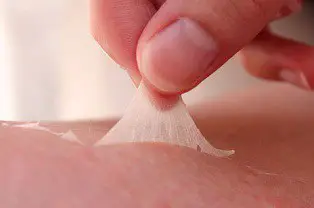
Sun poisoning can be realized a few hours after sun exposure. When you get at home and notice some signs such as; itchiness, redness, blisters, wheezing, dizziness, and loss of consciousness, there are quick home care steps you need to take, and they include the following:
- Take a cool shower or bath or place clean wet, cool wash rags on the burn.
- Avoid using products that can cause skin allergic reactions and burns, such as benzocaine or lidocaine.
- Cover blisters with dry bandages to avoid bacterial infections.
- Drink a glass of cold water that is not ice cold to stay hydrated.
- You can apply a moisturizer to the skin to relieve the tension. Avoid using oily skin moisturizers such as petroleum jelly (Vaseline) to block the pores, retain heat and sweat.
- Go for over the counter anti-inflammatory and painkiller medicines such as ibuprofen or acetaminophen.
- You can use cortisone creams to reduce and prevent inflammation.
- Do not wear tight nylon material clothing but instead, go for loose cotton.
- Stay out of the sun to avoid further sun poisoning.
- Apply Aloe Vera Gel lotion or cream on the affected area of the skin. You can use a direct natural extract of this ingredient or obtain the products from the drugstores.
- Compress the face with a mixture of milk and water in equal amounts.
- Use SPF, a sun protection factor of 30 or above, which you should regularly apply when outdoors.
Sun poisoning can become severe and with persistent symptoms. You need to seek emergency medical attention if the symptoms become more serious. This is when severe pain, severe blistering, headache, confusion, vomiting, fainting, and dizziness. These could also be a sign of a serious underlying medical condition that requires emergency medical care.
When you get to the medical center, the doctor will conduct a sunburn diagnosis. Your medical history will be obtained, and an examination of sun poisoning on the face or other body parts will be done physically and by laboratory tests. The intensity of burning will be detected, and you will be recommended for medical treatment.
- ALOE VERA GEL PLUS: Sunburnt After Sun Gel combines a unique formula of pure aloe PLUS deeply skin nourishing ingredients like calendula, echinacea & hyaluronic acid (sodium hyaluronate), to hydrate, moisturize & provide soothing relief for dry skin, including sunburn. Best of all, unlike other pure aloe vera gel & organic aloe vera gel products, it leaves skin feeling silky smooth, never sticky!
- ALOE VERA MOISTURIZER FOR MORE THAN JUST SUNBURN RELIEF: SunBurnt's patented after sun aloe vera gel is ultra hydrating & great for moisturizing skin care on the face & body. Our aloe moisturizer's nourishing blend of ingredients has shown to increase skin hydration by +20%, making it an excellent way to boost skin hydration & nourish dry skin from head to toe.
- NON-STICKY ALOE GEL: Pure aloe vera gel & organic aloe vera gel products have been used for decades to cool down, help heal & soothe sunburn, hydrate dry skin & provide itchy skin relief. Unlike most other aloe vera gels, SunBurnt combines aloe vera extract with additional super-hydrating ingredients & leaves your skin feeling moisturized, cool & silky smooth, never sticky!
- ALTERNATIVE TO LIDOCAINE FOR SOLAR RECOVERY: There are many aloe vera cream, aloe lotion, after sun lotion & sun burn cream products that contain lidocaine. If you're looking for a more natural alternative to blue numbing gels that help skin recover, SunBurnt is 98% natural & is so soothing that people have used it as a burn treatment (cooling & soothing burn relief for minor burns) & radiation cream (for cooling & soothing hot, dry skin).
- LOVE YOUR SKIN: Many other after sun gel & after sun lotion products contain questionable ingredients. SunBurnt's Aloe Vera Gel has been tested by dermatologists & is hypo-allergenic. Furthermore, this product contains ZERO parabens, glycols, PEGs, phthalates, dyes or fragrances!
* As an Amazon Associate I earn from qualifying purchases.
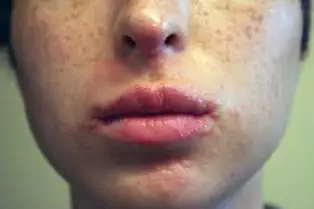
How to Treat Sun Poisoning on Face?
Face sun poisoning treatment will depend on the type of poisoning and the intensity of burning. First aid is normally the initial treatment, and it involves over-the-counter painkillers such as ibuprofen or naproxen. Sunburn lotions and creams can also be used in the prevention of the situation. Sun Bum is an example of the best effective topical lotion for the treatment and prevention of sunburn.
When the sun poisoning on the face is mild and not life-threatening, more fluids may be recommended by the doctor. Taking aspirin and no steroidal anti-inflammatory drugs may be used to fix the swelling and blisters. The patient may also be suggested for cool compresses such as Burow’s solution soaks and effective moisturizing creams and lotions to the affected area.
Oral steroid therapy can be used in severe cases. This mostly involves the prescription of cortisone medications for some time. This can also involve strong pain reliever medications depending on the doctor’s observation and recommendation. Silver sulfadiazine is an effective treatment though it may not be used on the face due to side effects.
- COOL DOWN ALOE VERA GEL. We like to prevent sunburns, but if you get one, our soothing Aloe gel is a lifesaver. Dermatologist and Sonny approved, this after sun mixture instantly nourishes and prevents peeling of sun damaged skin
- SOOTHING SUNBURN RELIEF. So you got greedy and burned your skin. Calm your sensitive skin with our “Cool Down†gel, formulated with Vitamin E and Tea Tree Oil to ease your after sun pain
- HOW TO USE. After sun exposure, apply generously to all areas of the skin. For best results, apply right after sun burn occurs or before sun exposure. Sonnyâ€s Tip: Keep it refrigerated for a bonus relief
- PRESERVE AND INTENSIFY YOUR TAN. Our Cool Down lotion gives your skin an extra boost to lock in and maintain your new tan. The light, non-greasy formula is quickly absorbed, leaving the skin smooth and soft
* As an Amazon Associate I earn from qualifying purchases.
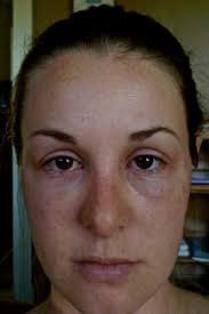
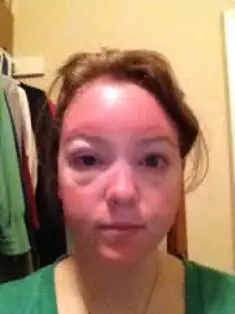
Sun Poisoning Swollen Face
Sun poisoning can cause premature aging of the skin and also severe infections such as skin cancers. Therefore you should take necessary precautions when you realize an effect on your skin. The best way is to avoid the sun, and if you have no option, there are other ways to prevent sun poisoning.
How to Prevent Sun Poisoning on Face?
- The sun is normally too hot during peak hours. Avoid getting outdoors from 10 am to 4 pm.
- Wear wide-brimmed hats, sunglasses with UV protection, long-sleeved shirts, and pants.
- Avoid medications and drugs that make your skin vulnerable to sun poisoning.
- Avoid abuse of substances such as excessive use of mind-altering drugs, which will impair your judgment.
- Be cautious while going for short and sequential sun exposure since it can cause tanning and skin cancer in the long run.
- Avoid tanning beds since they are associated with serious cell conditions such as basal cell carcinoma and squamous cell carcinoma.
- Young adults and children are at high risk of sun poisoning compared to aged people.
- Use sunscreen and sun protection while outdoors.
- This product is non-sealed
- 3-fluid ounce bottle of Neutrogena Ultra Sheer Dry-Touch Non-Greasy Sunscreen with SPF 100 that helps defend against the signs of sun and decrease the risk of skin cancer caused by the sun when used as directed
- This product is non-sealed
- Both PABA-free and non-comedogenic, this lightweight sunscreen provides powerful face and body sun protection without the heavy finish, making it great to use for daily sun protection.
* As an Amazon Associate I earn from qualifying purchases.
Sun Poisoning Blisters on Face
Blisters on the face can be due to sun poisoning. They can associate a sun poisoning swollen face and peeling of the skin. Quick measures need to be taken since they can erupt and cause bacterial infections such as cancer. Use of appropriate sunscreen and sun protection is the best way to prevent sun poisoning blisters on the face.
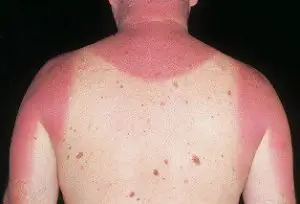
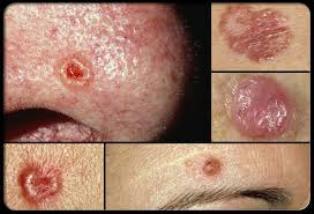
While going for sunblock, pay more attention to the sun protection factor (SPF) and don’t mind about the PABA since some sensitive skin types are allergic to PABA. This should not be used in children below 1-year-old as it can irritate. This chemical element is therefore not common in many sunscreens due to such side effects.
The product with high SPF offers more protection against UV and UVB rays. This is simply a ratio of the time such a product takes to produce a skin reaction on protected and unprotected skin. In layman’s, a product with SPF 30 would allow an individual to be exposed 30 times longer than one with no sunscreen when other factors are held constant.
The American Academy of Dermatology recommends using a broad-spectrum waterproof sunscreen with an SPF of at least 30. Apply enough and regularly. While on sun application after every 2 hours is recommended by the American Academy of Dermatology.
You are also advised to use a lip balm with SPF 30 and above to prevent your lips from sun poisoning. Beware that not all sunscreen is water-resistant; swimming and sweating can degrade such non-waterproof sunscreens’ effectiveness. Therefore, replying is the best way to ensure your protection against harmful radiation from the sun.
In conclusion, besides sun poisoning on the face, too much sun exposure can cause premature aging of the skin cells, the formation of wrinkles, uneven skin tone, development of moles, eyes problems, and cancerous skin tumors.
Recent Posts
If you’re looking for the simplest, cheapest and best way to get that cleansed and nourished skin in no time, you definitely have to consider some of the best facial steamers for home. With the...
What is the best skin lightening cream for dark skin marks, African Americans? Get more insights on the most effective skin whitening cream and lotions for dark skin marks, pigmentation and acne...

